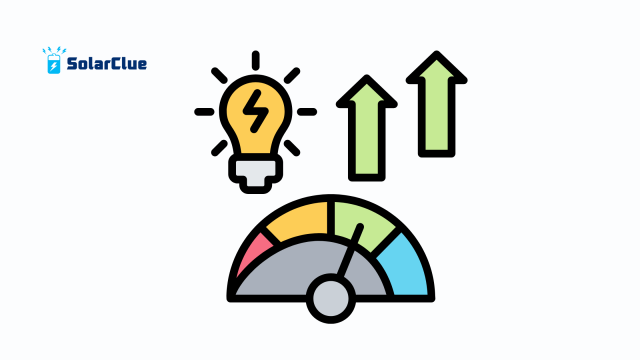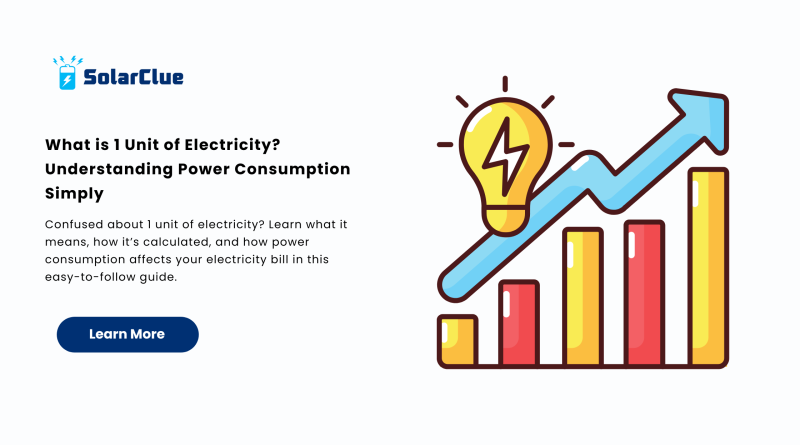What is 1 Unit of Electricity? Understanding Power Consumption Simply
When we receive our electricity bill, we often see the number of “units” consumed during a billing period. But have you ever wondered what 1 unit of electricity actually means? Understanding this concept is key to managing your power consumption and reducing monthly bills. In this blog, we’ll break it down in a simple and relatable way so you can take control of your electricity usage and costs.
Table of Contents
- 1 What Does 1 Unit of Electricity Mean?
- 2 How is Power Consumption Calculated?
- 3 Why Is Understanding 1 Unit of Electricity Important?
- 4 Common Appliances and Their Unit Consumption
- 5 How 1 Unit Affects Your Electricity Bill
- 6 Tips to Reduce Power Consumption and Save on Bills
- 7 How to Monitor 1 Unit of Electricity in Real-Time
- 8 Understanding Electricity and Power Ratings
- 9 FAQs on 1 Unit of Electricity
What Does 1 Unit of Electricity Mean?
In basic terms, 1 unit of electricity equals 1 kilowatt-hour (kWh) of energy. That means if you use an appliance that consumes 1000 watts (or 1 kilowatt) for one hour, you’ve used 1 unit of electricity.
For example:
-
A 1000W geyser running for 1 hour = 1 unit
-
A 100W fan running for 10 hours = 1 unit
-
A 10W LED bulb running for 100 hours = 1 unit
This measurement helps electricity providers calculate how much energy you’ve used and how much to charge you on your electricity bill.
How is Power Consumption Calculated?
To calculate how much electricity an appliance uses:
Formula:
Units Consumed = (Wattage × Hours Used) ÷ 1000
Example:
A 500W refrigerator running for 10 hours a day:
(500 × 10) ÷ 1000 = 5 units per day
The total units per month would be:
5 units × 30 days = 150 units
This is how your power consumption turns into actual units, which show up on your bill.

Why Is Understanding 1 Unit of Electricity Important?
Understanding what 1 unit of electricity means empowers you to:
-
Track energy usage of your appliances
-
Reduce unnecessary power consumption
-
Lower your monthly electricity bill
-
Choose energy-efficient appliances
When you’re aware of how much energy each device consumes, you can make smarter choices—like using timers, switching to LEDs, or replacing old gadgets with 5-star rated ones.
Common Appliances and Their Unit Consumption
Here’s a quick reference table showing average daily power usage:
| Appliance | Wattage | Usage Hours | Units/Day |
|---|---|---|---|
| Ceiling Fan | 75W | 10 hrs | 0.75 |
| LED Tube Light | 20W | 6 hrs | 0.12 |
| AC (1.5 Ton – Inverter) | 1500W | 6 hrs | 9.0 |
| Washing Machine | 500W | 1 hr | 0.5 |
| Refrigerator (300L) | 200W | 24 hrs | 4.8 |
| Geyser (25L) | 2000W | 1 hr | 2.0 |
Note: Actual consumption may vary based on brand and usage pattern.
How 1 Unit Affects Your Electricity Bill
Your electricity bill is calculated based on the number of units consumed multiplied by the cost per unit (which varies based on your state and slab rate). For instance:
-
0–100 units: ₹3 per unit
-
101–200 units: ₹5 per unit
-
Above 200 units: ₹7 per unit
If your monthly usage is 250 units, your total cost is not just 250 × ₹7. It is calculated in slabs, so understanding your unit consumption helps you optimize usage and stay in lower-cost slabs.
Tips to Reduce Power Consumption and Save on Bills
-
Switch off appliances when not in use
-
Use energy-efficient devices like LED bulbs and inverter ACs
-
Unplug chargers and electronics that draw standby power
-
Schedule heavy appliances (like washing machines) during non-peak hours
-
Monitor your usage regularly through smart meters or electricity board apps
How to Monitor 1 Unit of Electricity in Real-Time
You can monitor your unit-wise consumption in a few simple ways:
-
Smart meters provided by electricity boards
-
Mobile apps by your DISCOM (e.g., BESCOM, TANGEDCO)
-
Smart plugs that measure consumption per appliance
-
Manual monitoring using your electricity meter readings
By keeping an eye on your usage, you can stay ahead and avoid unexpected spikes in your electricity bill.
Understanding Electricity and Power Ratings
When buying appliances, always check the wattage and energy star rating. A 5-star AC may consume significantly less energy than a 2-star one. These small decisions influence your power consumption and long-term savings.
FAQs on 1 Unit of Electricity
1. What is 1 unit of electricity in kWh?
1 unit of electricity is equal to 1 kilowatt-hour (kWh), which means using 1000 watts of power for 1 hour.
2. How can I calculate the units used by an appliance?
Use the formula:
(Wattage × Hours Used) ÷ 1000 = Units Consumed
3. Does using appliances at night reduce electricity cost?
It depends on your electricity provider. Some offer time-of-use tariffs where nighttime usage may be cheaper.
4. Why does my electricity bill seem high?
High power consumption, old inefficient appliances, and standby power draw can all increase your bill. Monitoring usage is key.
5. Can solar panels reduce my unit consumption?
Yes. Solar energy can offset your grid usage and reduce the number of units you pay for, lowering your electricity bill over time.
Understanding what 1 unit of electricity is can transform the way you use energy at home. By becoming more aware of your power consumption, you not only save money but also contribute to a more energy-efficient world. If you’re interested in long-term solutions to reduce your electricity bills, explore how solar power can help you at SolarClue and read more insights at blog.solarclue.com



